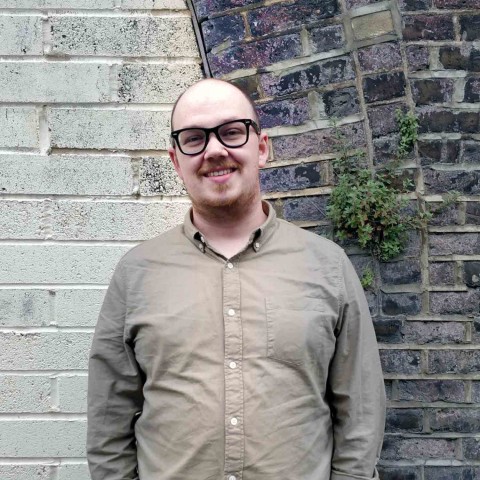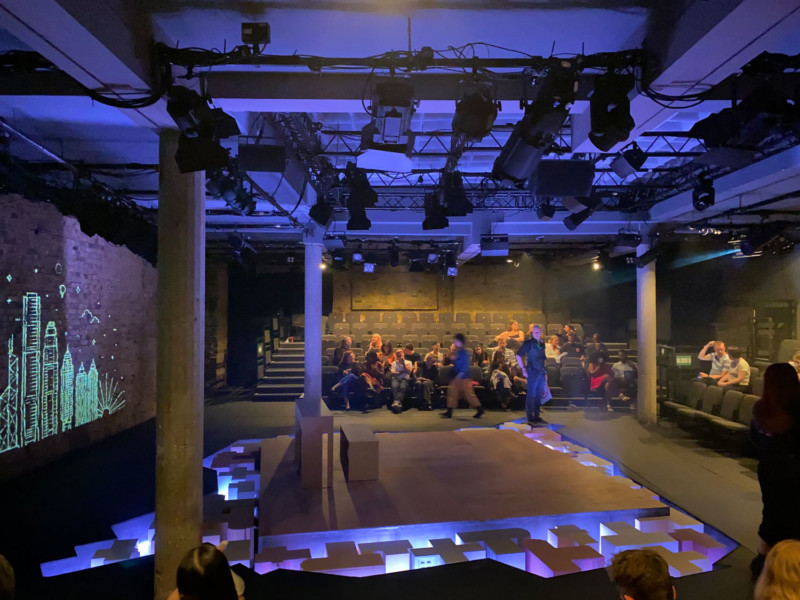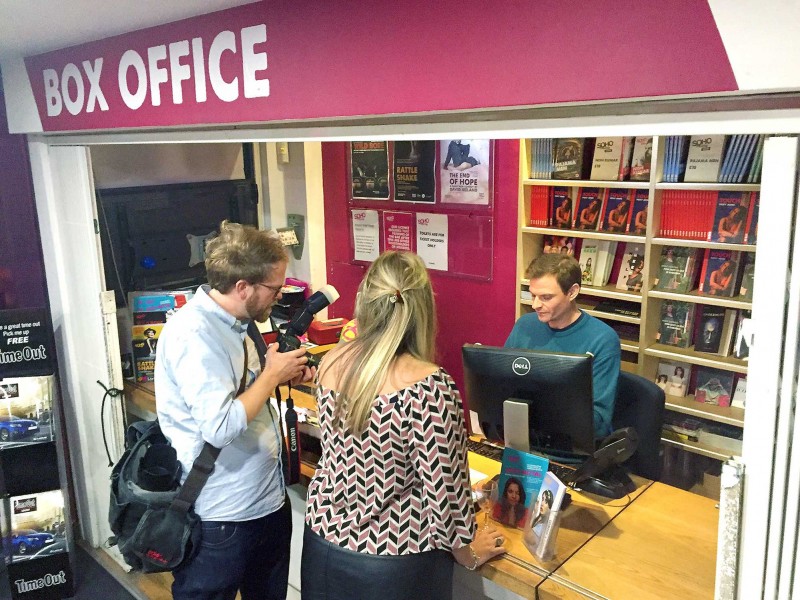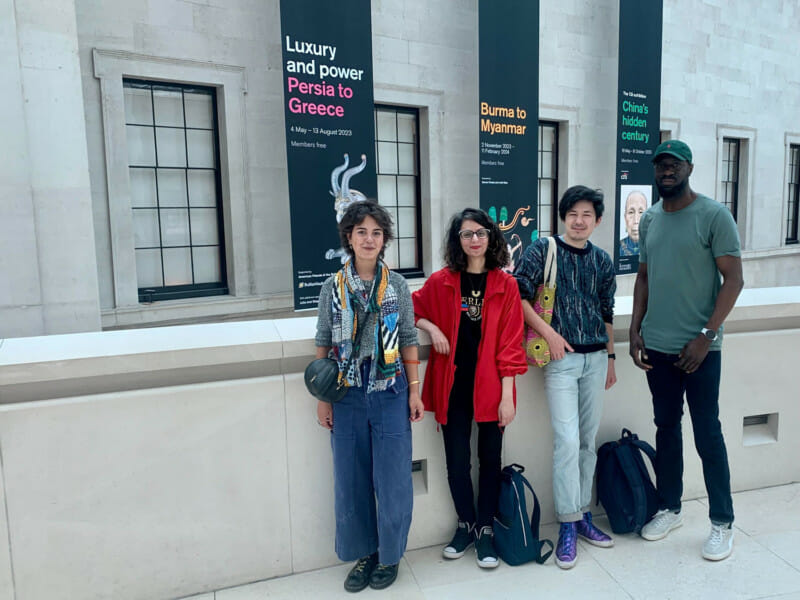For our July Cog Night we went to see AJ Yi’s A Playlist for the Revolution at The Bush Theatre. Billed as “a radical rom-com with a twist” Alex gives us his take on the show.
A Playlist for the Revolution at The Bush Theatre

One of the best things about Cog Nights is getting to explore venues all across London as a team and to take in new places, or to shed a new light on known ones. Several of my close friends live in and around Shepherd’s Bush, but this was my first trip to the recently refurbished Bush Theatre. And I was excited to see AJ Yi’s A Playlist for the Revolution.
Enjoying the summer sun we arrived early for drinks outside. Whilst some of the team went searching further afield I sampled one of the locally sourced falafel wraps available from the bar at the Bush Theatre, which was excellent.
Fittingly for a show centred around a playlist there were links around the building to access the eponymous playlist of the show (or similar) on Spotify.
Once we entered the theatre we were greeted by Liam Bunster’s stark but highly effective set which consisted of a central island surrounded by a trench full of wooden blocks, that on closer inspection were carefully designed Hong Kong skyscrapers. These were put to great use as multipurpose set pieces throughout the show, forming beds, sofas, barricades and more.
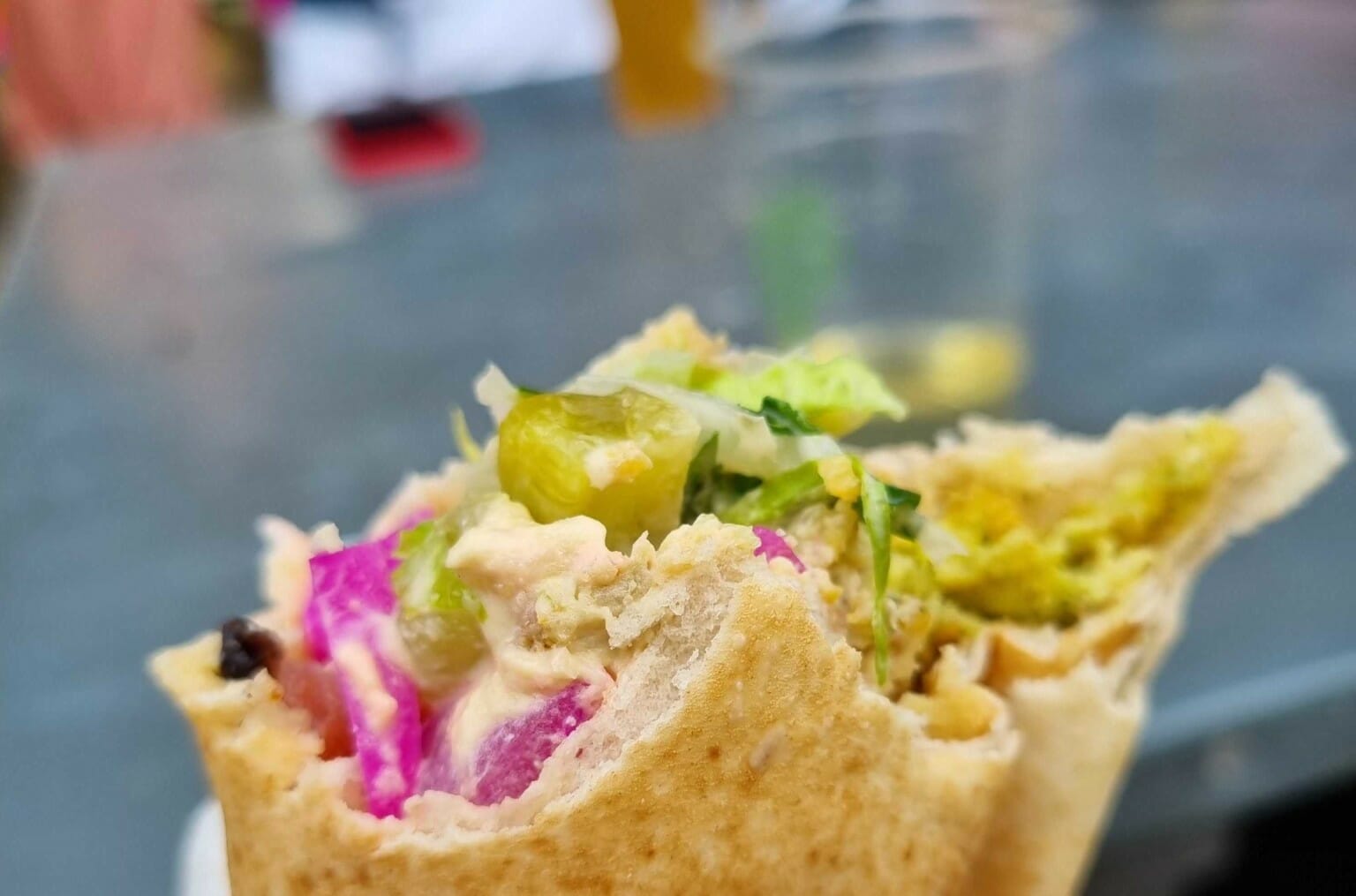 A tasty wrap from The Bush Theatre
A tasty wrap from The Bush Theatre
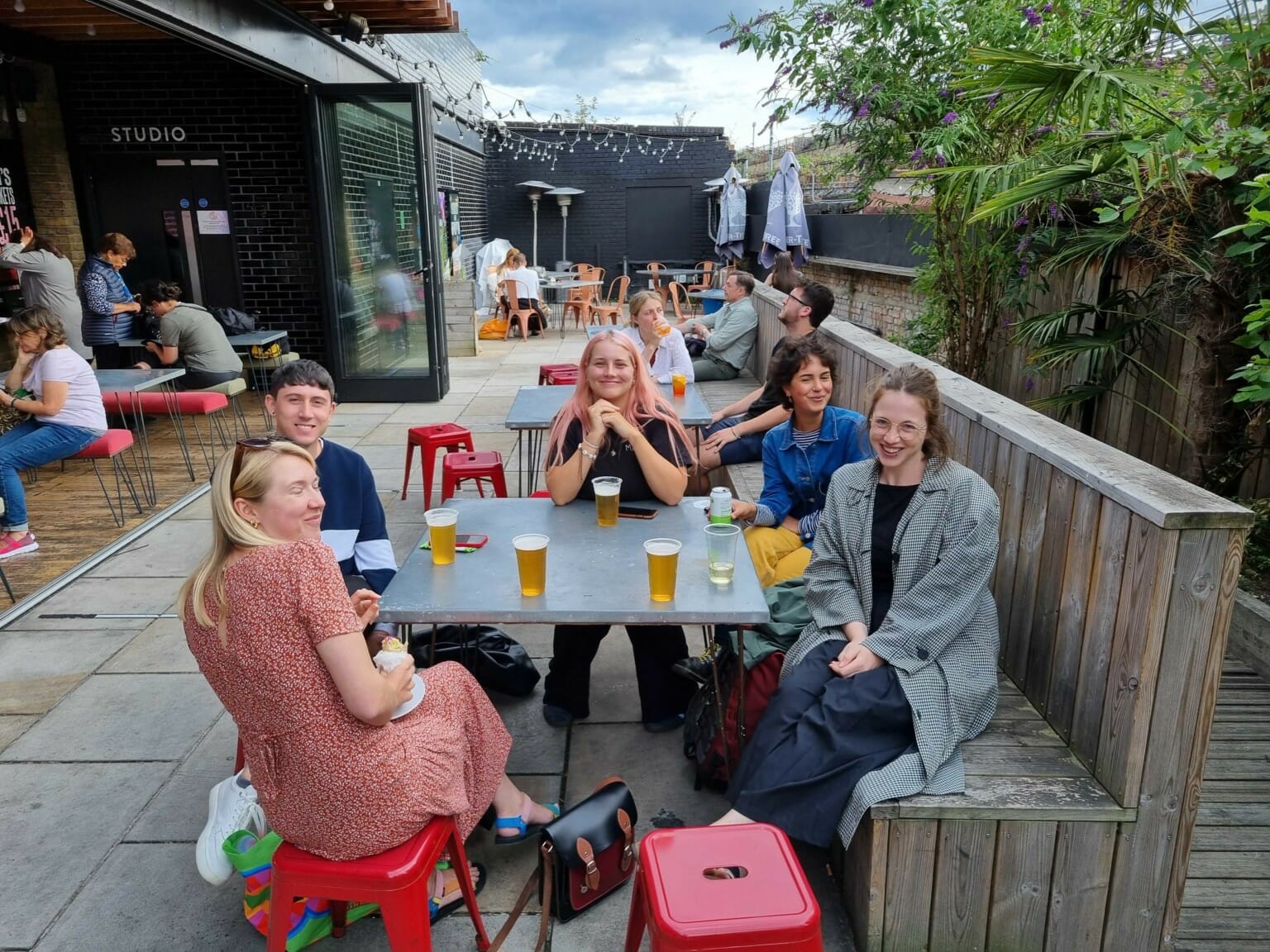 The Cog Team enjoying some drinks outside the Bush Theatre
The Cog Team enjoying some drinks outside the Bush Theatre
Music played a central role in the show and brought back a deep nostalgia for me. Music can and does change the world and it’s magical when you first discover its power.
However the details of the eponymous playlist didn’t feature as much as I had expected throughout the play. It did provide a useful mechanism to explore the characters of the youthful, passionate Chloe and the more cautious conservative Jonathan. But the music was often fragmentary, and used as much for comic or momentary effect as for its inspirational power.
Though in some ways, perhaps that was the point. Many people have discovered the magic of Joni Mitchell’s Big Yellow Taxi, and it’s inclusion served to highlight some of the innocence and idealism of Chloe and Jonathan.
The cast made great use of the set and building with its natural pillars, used to convey the remote relationship between Chloe and Jonathan and the fragmented nature of friendships like these.
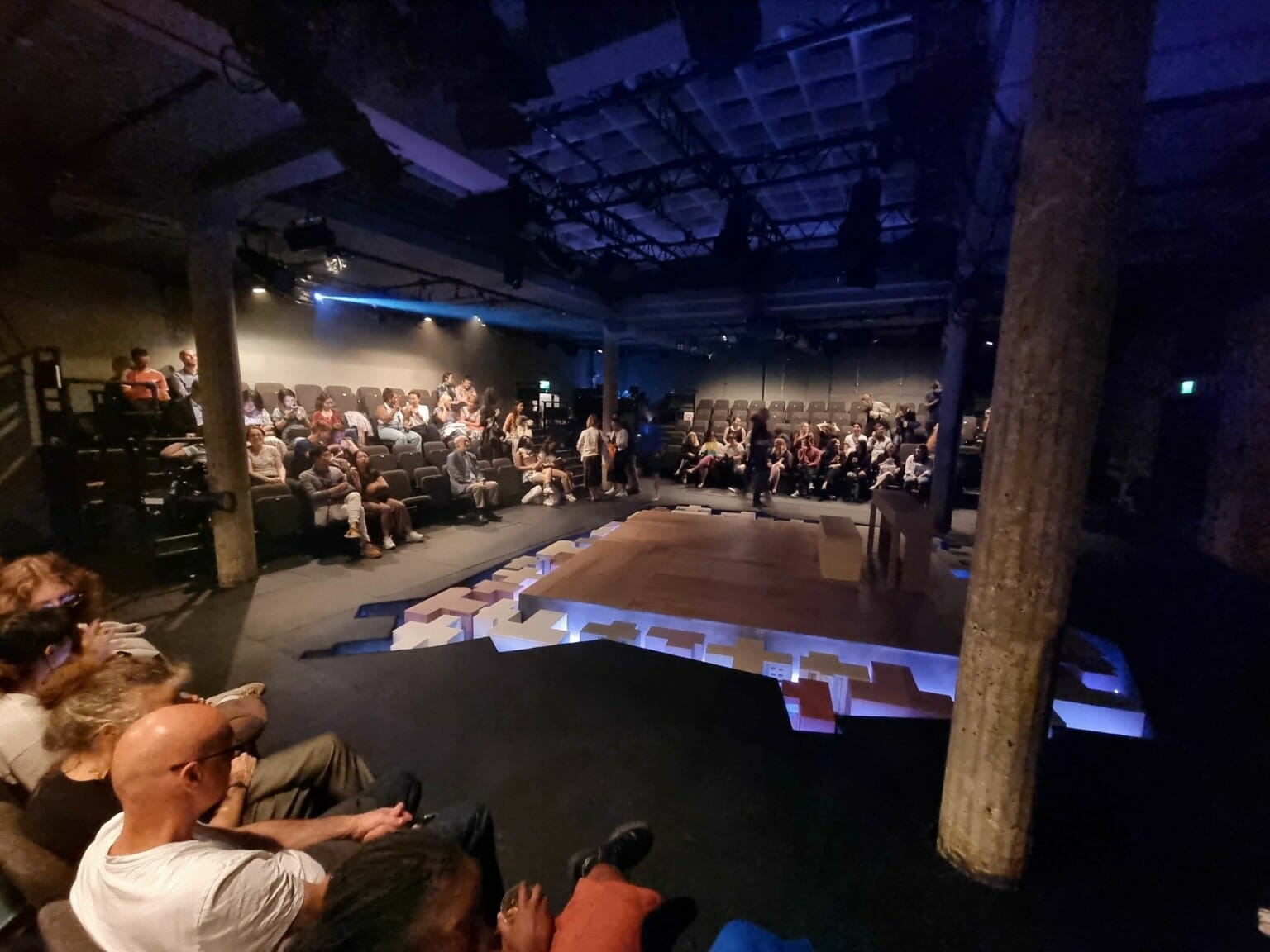 The set of A Playlist for the Revolution - An open stage with a trench full of models of buildings.
The set of A Playlist for the Revolution - An open stage with a trench full of models of buildings.
 Liam Bunster's Set for A Playlist for the Revolution - A series of blocks recessed into a floor in the trench
Liam Bunster's Set for A Playlist for the Revolution - A series of blocks recessed into a floor in the trench
For me the real star of the show was neither of the initial main characters but Zak Shukor’s curt, world weary but hilarious Mr.Chu. The character was played to much comic effect but with real emotion beneath. He embodied the traditional Hong Kong citizen who, unlike the privileged middle class students, was unable to simply escape or walk away from the troubles of his home (hat tip to my colleague Justin for this careful observation).
As well as providing a mechanism for teaching both the character of Jonathan and the audience about the motivations and stories behind the recent Hong Kong protests, he also provided a refreshing counterbalance to the occasionally over the top youthful exuberance of the other characters within the show.
In the second half of the show Chloe’s character faded into the background as we focused on the relationship between the two men and their active role in protesting. This felt like a wasted chance to explore the difficulty of being remote from huge events and Chloe’s expatriate perspective on things. Instead she was reduced to a rather flat version of the character we’d grown to know in the first half.
The epilogue of the show also felt a little strained. Whilst it did a good job of communicating Chloe and Jonathan’s ability to escape, it seemed to be a strange attempt to both tie a bow on the story whilst also not committing to a full resolution.
Overall I enjoyed A Playlist for the Revolution. Despite some challenges, the show was an engaging exploration into a complex story of identity, culture and the places we call home.
As a British white man the revolution in this play isn’t my story. And I don’t feel qualified to say if it was a fair representation of the protests and politics of Hong Kong. But as a piece of art the play engaged me in the story of those protests and gave me a new perspective about a topic that I only had a passing knowledge of. In some ways this is the same as many of the songs in the show and playlist and after all what we want art to do, right?


